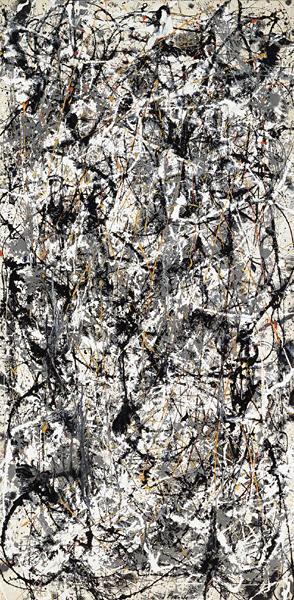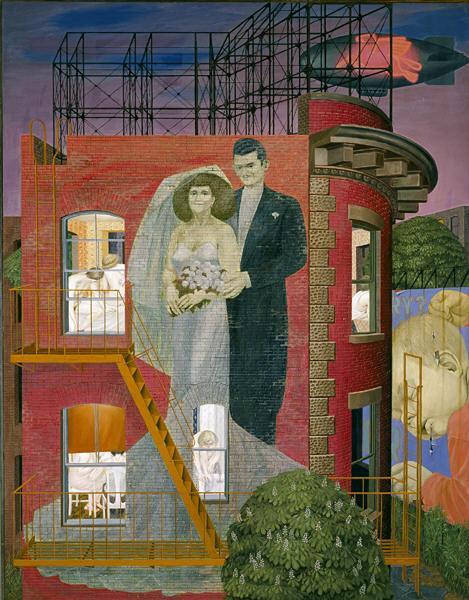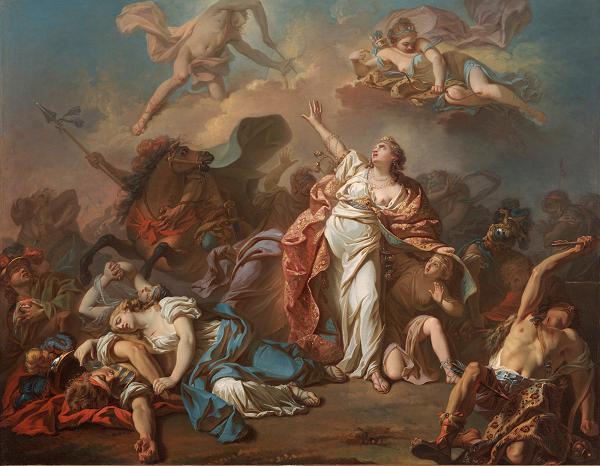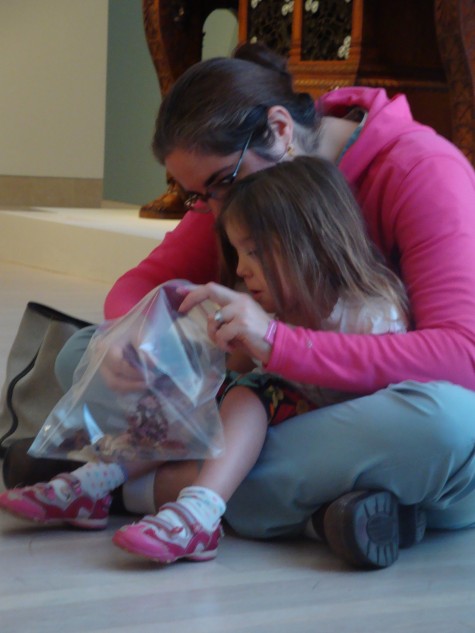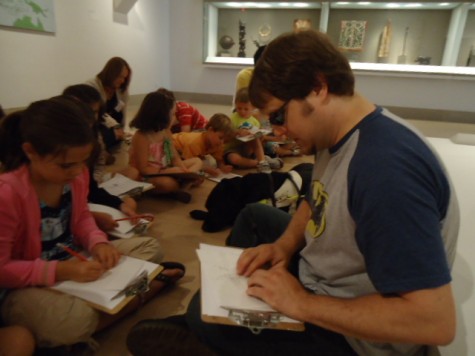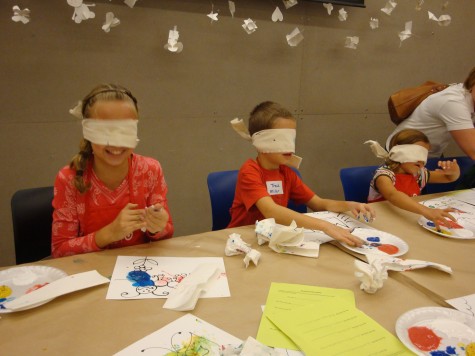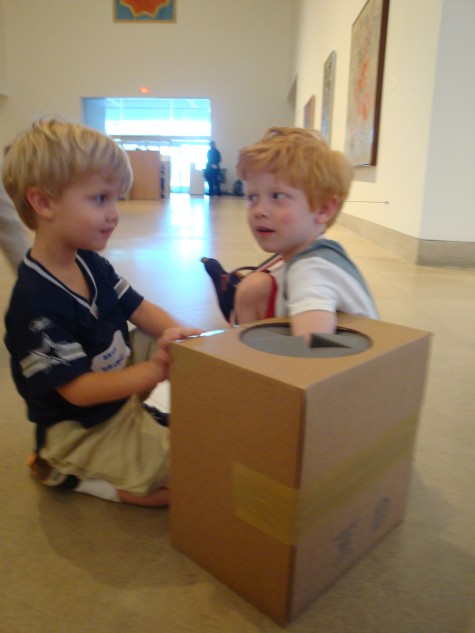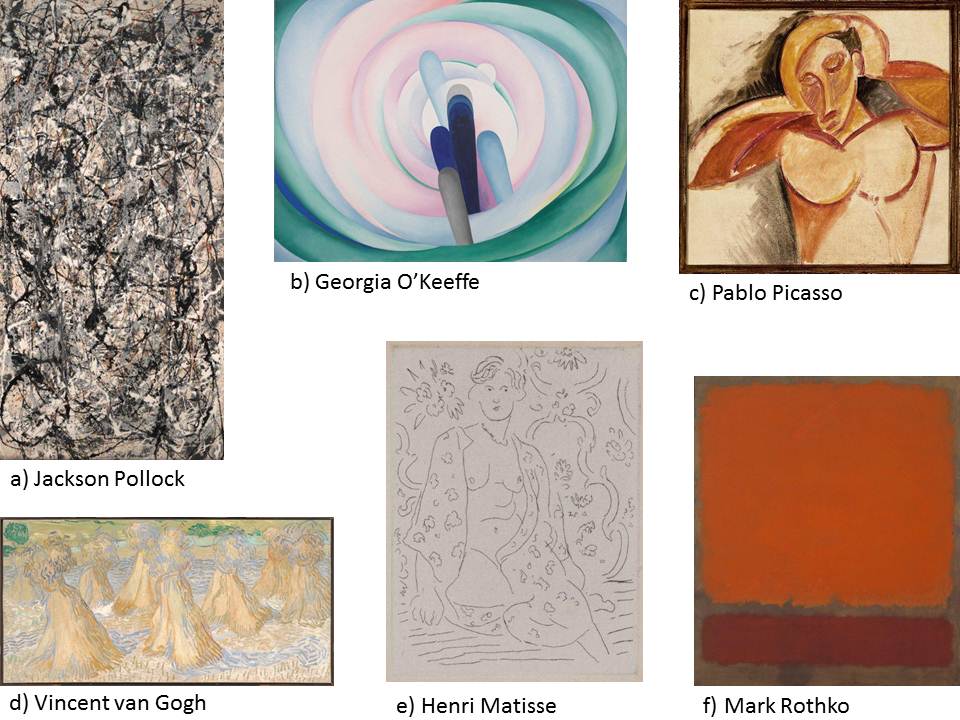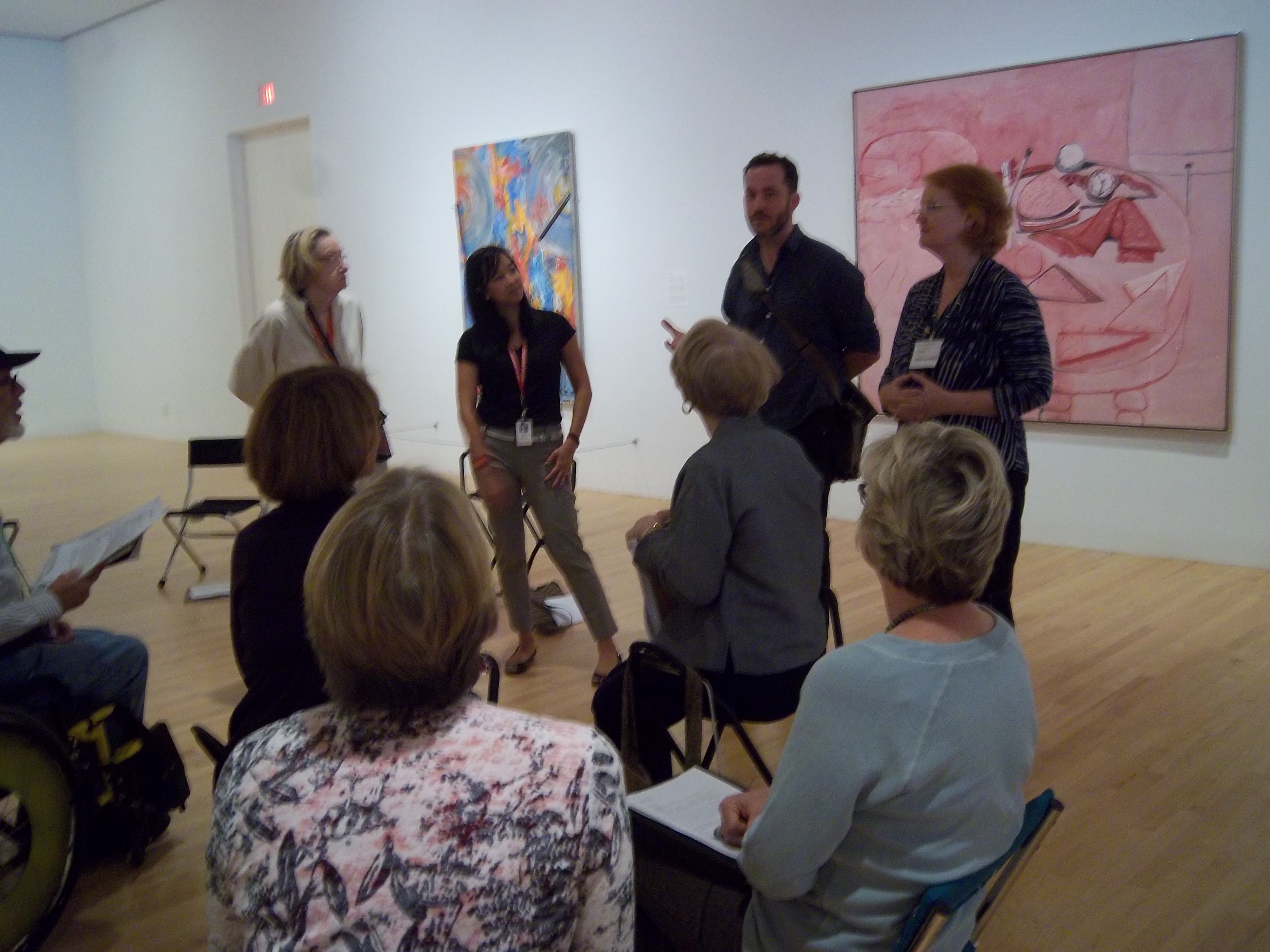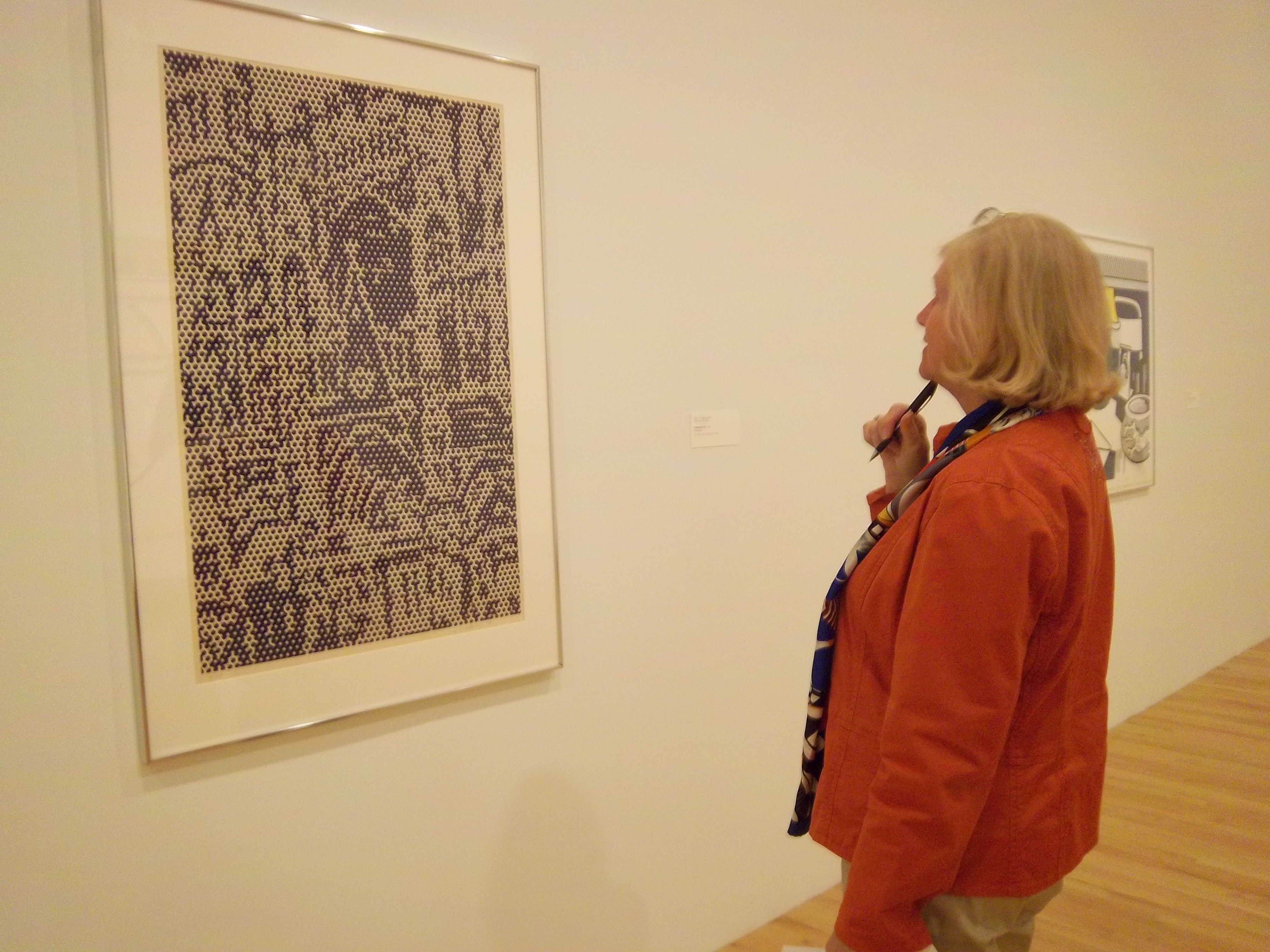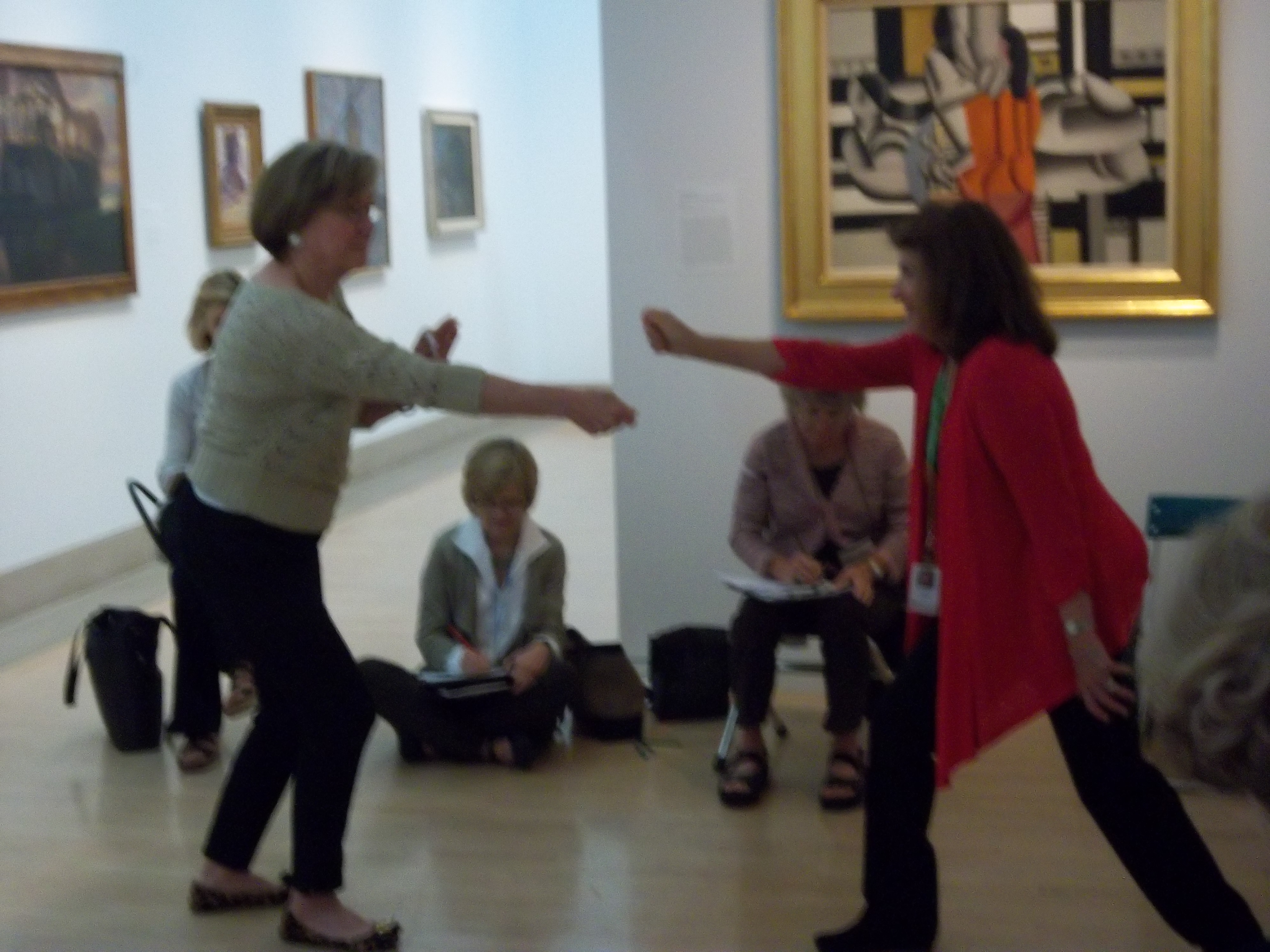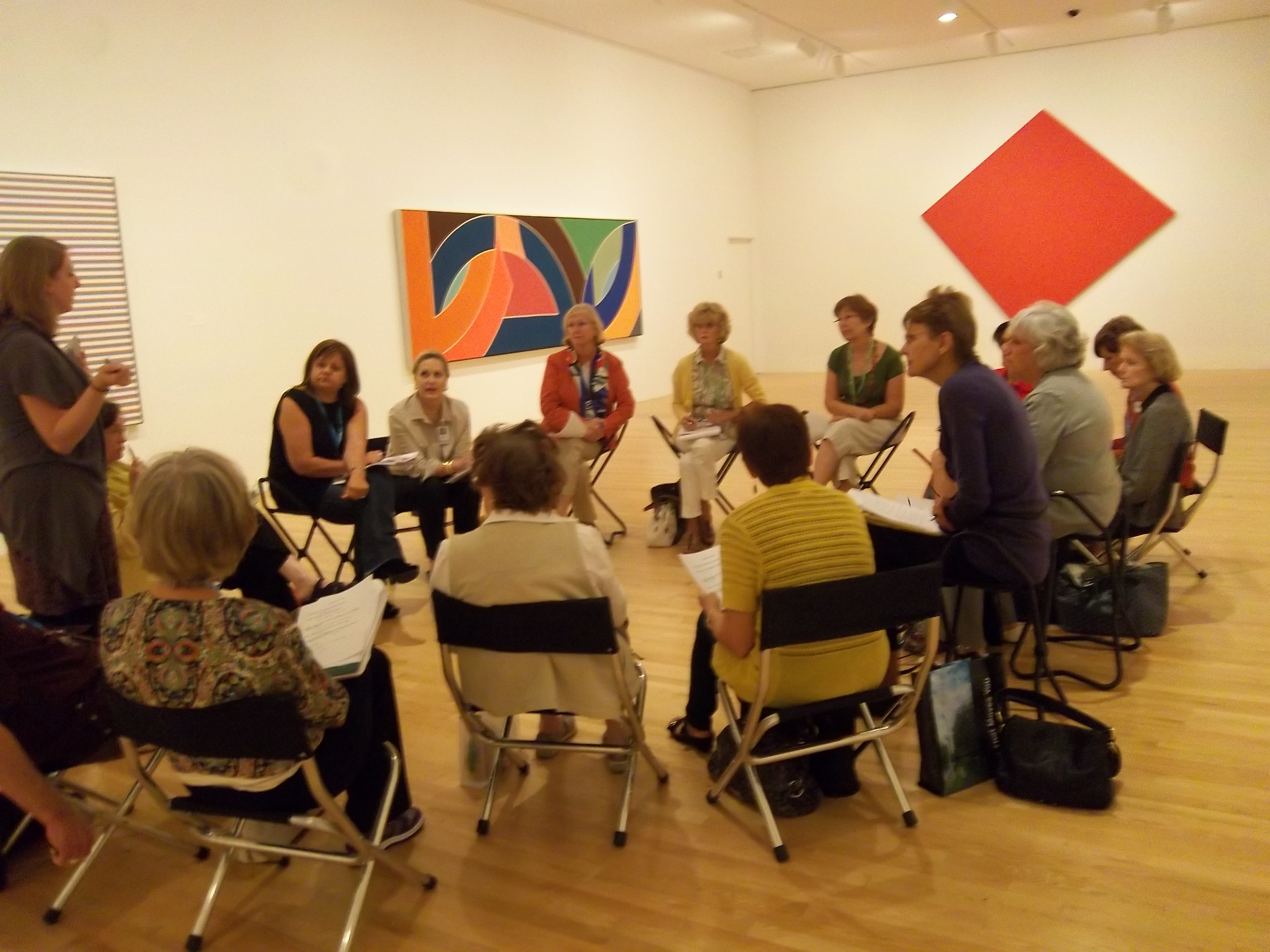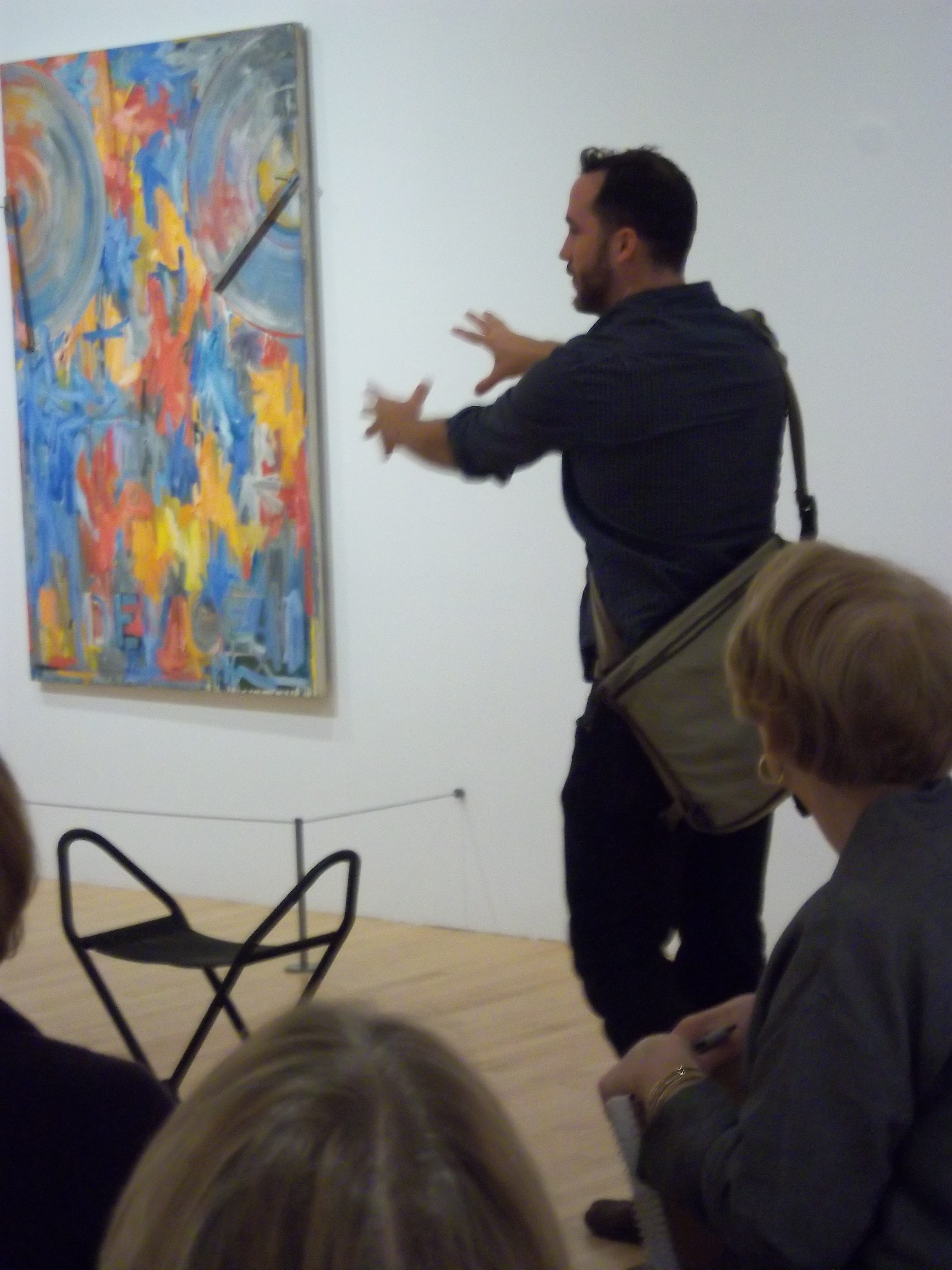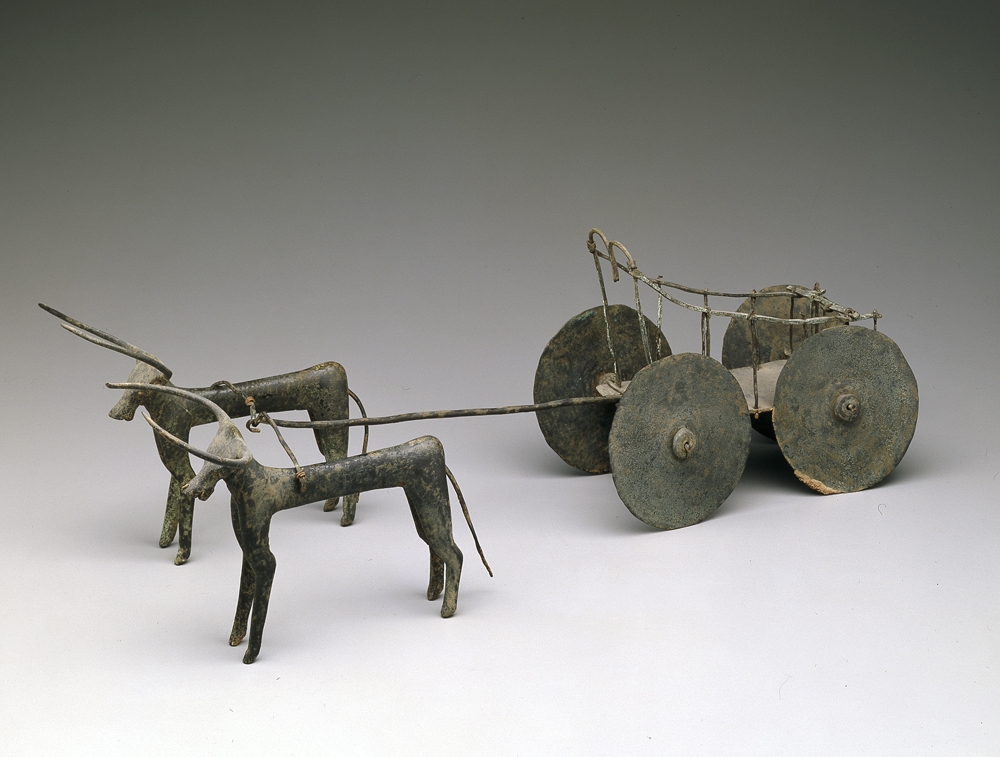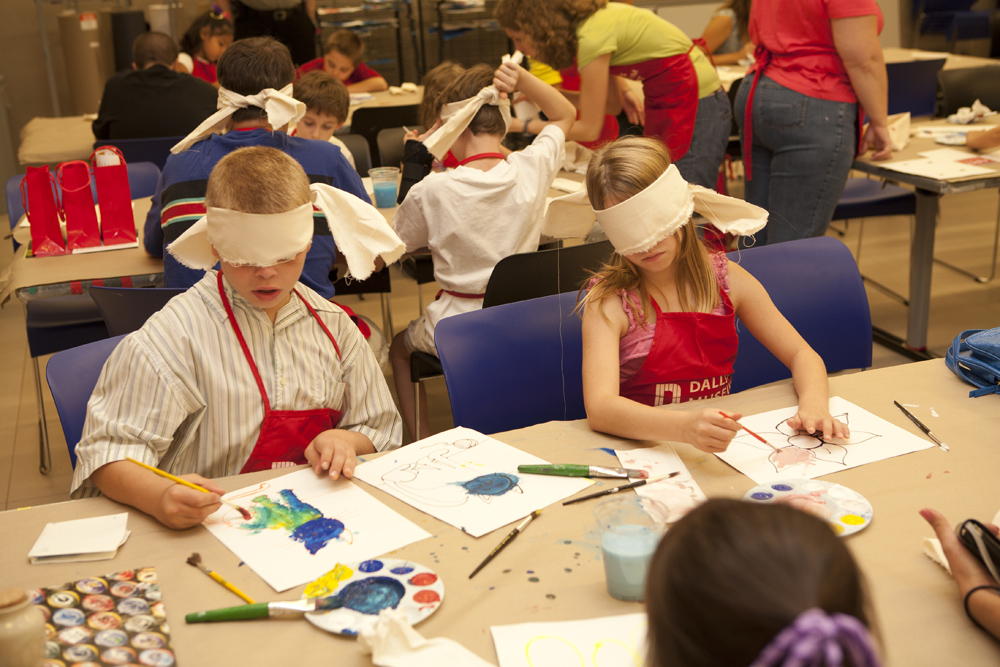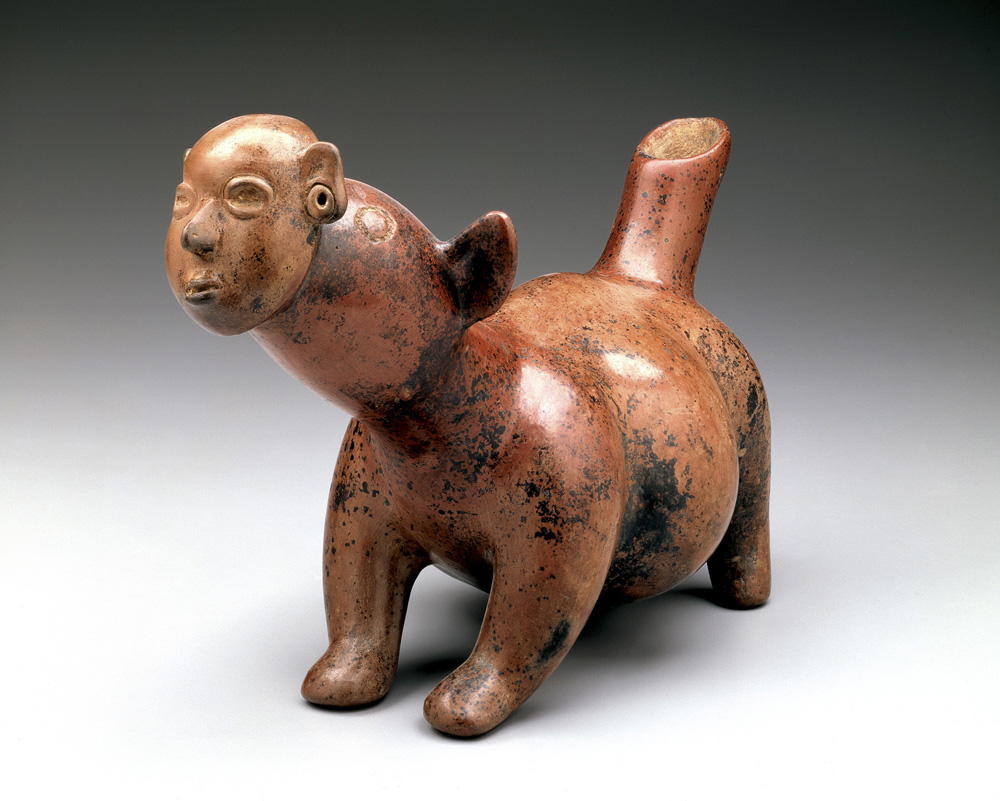Detail, the massive ark currently grounded in the Barrel Vault, recreates part of Mark Bradford’s earlier work Mithra which was installed in New Orleans after hurricane Katrina. Detail consists of a steel and wood core to which is attached plywood panels to form the outer hull. The only part of the original Mithra that is used for this new piece is the outer plywood hull; the inner structure is new and was designed and fabricated for Bradford’s retrospective.
Because of the size and complexity of Detail, it was decided early in the planning stages of our exhibit that I would travel to Chicago to observe the piece being installed at the Museum of Contemporary Art. Being able to watch and participate in the assembly of Detail at the MCA answered most of the questions we had about its construction. Well before we began our installation, we had a very firm idea of how the piece would go together and how long it would take to build.
The first two days of installation were spent bolting together the inner steel core, which comprises thirteen steel uprights, sixteen corrugated steel panels, and almost forty horizontal and diagonal braces. Due to the size and weight of the individual components, and the fact that the steel panels were an extremely tight fit to the uprights, this was the most difficult part of the installation. The prep staff made judicious use of rubber mallets to “persuade” the steel panels to fit. When completed, this inner core replicates the look of the steel shipping containers used in the original Mithra. Detail is designed so that the viewer can get a slight glimpse of this inner structure through small gaps between the plywood panels that form the hull.
Once we were finished assembling the steel core, the installation went fairly quickly. The next step was to attach eleven large wooden “ribs”—each in two sections, a top and a bottom—that bolted on to flanges on the steel uprights. At this point what had been a huge steel box began to take on the shape of a giant boat. Next a series of horizontal wooden braces were screwed between the ribs. These horizontal braces, along with the wooden ribs, served as attachment points for the outer plywood “skin” that forms the hull of Detail. The final step was screwing the plywood panels to the ribs and horizontal braces, which completed the hull. The fit of the panels was not really precise; at this stage, we relied on our own aesthetic judgment, plus images from the installation in Chicago, to determine the exact placement and alignment of each panel in relation to the others around it.
We completed Detail in five days, right on schedule. Mark Bradford’s monumental boat and the Barrel Vault space seem to be made for each other, and Detail will certainly be as memorable a viewing experience as it was to install.
Mike Hill is a Preparator at the Dallas Museum of Art.

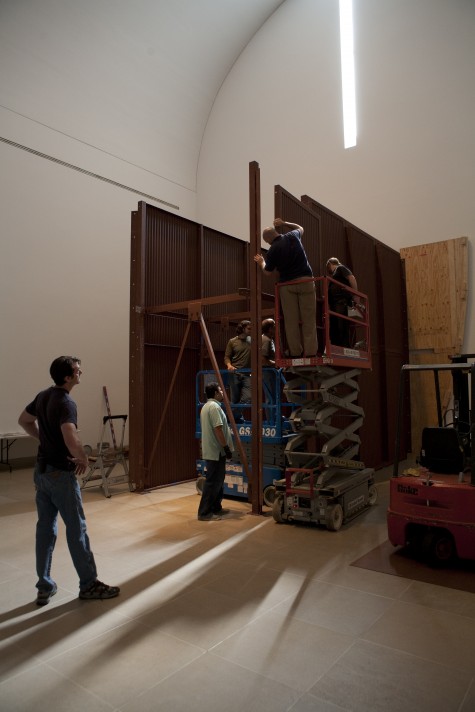
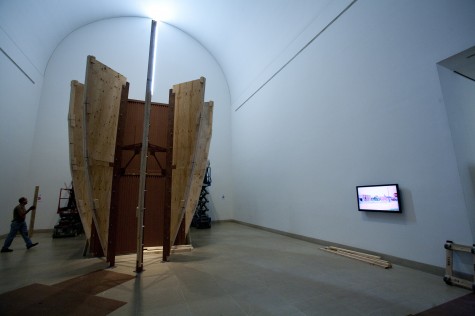



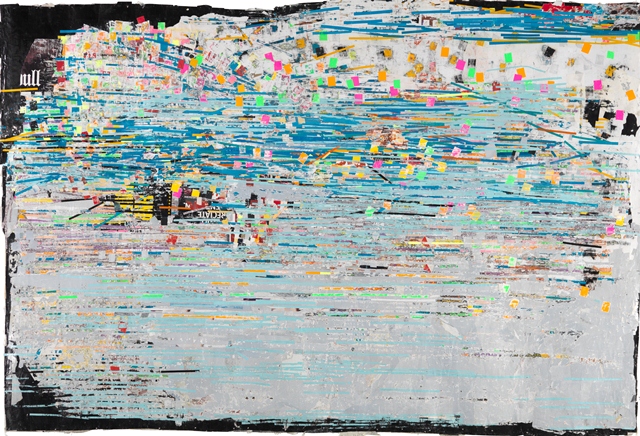
![20090921_wc-bradford_005[1]](https://blog.dma.org/wp-content/uploads/2011/10/20090921_wc-bradford_0051.jpg?w=300)

